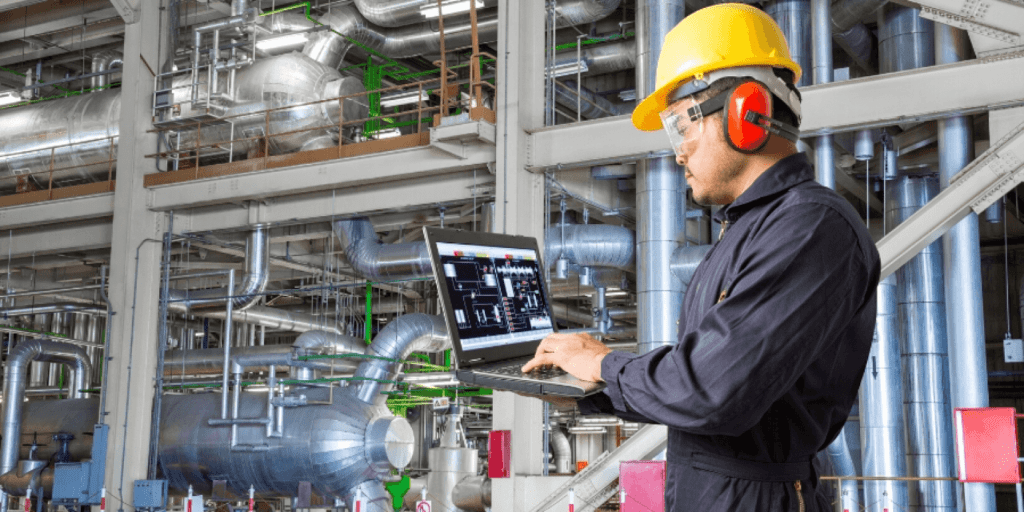Types of Predictive Maintenance: What Does Predictive Maintenance Mean to You?
We all know that in seismic research, the “Big One” refers to an expected massive earthquake along the San Andreas Fault that will happen…someday. Despite the monumental importance of predicting this event, scientists cannot say when it will happen with any precision. Prediction of heart attacks has equal importance…and equal imprecision, usually measured as a probability within years.
In a perfect world, maintenance reliability teams would be able to predict to the day when a complex asset will fail. They would pre-order replacement parts, schedule maintenance teams, and take the asset down for repairs just in the nick of time. Of course, in a perfect world, assets would not wear out at all, so we would not need predictive maintenance.
In the real world, 80 percent of complex assets demonstrate a random failure pattern not amenable to time-based maintenance schedules, as we described in our blog on preventive maintenance. In our blog on pervasive sensing we discussed how real-time measurement of an asset’s behavior allows reliability teams to go beyond generalized mean-time-to-failure models and FMEA analysis. These measurements may allow some asset specific “prediction” to occur.
There are many nearly synonymous terms floating around in the field of predictive maintenance, such as “prognostic,” “prescriptive,” “descriptive,” and “proactive.” They all boil down to two types of prediction: temporal prediction of when a failure will occur and localized prediction of where a failure will occur. We want to know both when and where.
Temporal Prediction: Can we know, in advance, the time when a failure will occur?
- For a Single Component: In the best case, some very simple asset components do lend themselves to temporal predictive models. For instance, brake pad thickness can be measured and trended over time to predict when it will need to be replaced. As another example, by trending metal fatigue in a single compressor blade, you can use a physics-based model to predict with some accuracy its likely failure. However, when you consider all of the blades in a gas turbine (typically more than 100 per row), the failure pattern again looks random. Furthermore, measuring progressive metal fatigue in internal components is not possible for an asset that is continually in service.
- For a Complex Asset: For a million-dollar asset with multiple subsystems, the outlook for ever having true temporal prediction is not good and looks more like the San Andreas Fault or a human heart than like a simple brake pad. Research shows that these complex assets demonstrate some rare early stage failures (what NASA calls “infant mortality”) followed by a probability of failure that usually stays constant over time. This means that true temporal prediction will always be limited to a specific probability of failure within a large time frame such as months. No amount of data science or application of artificial intelligence will ever change this.
Localized Prediction: Can we know, in advance, where a failure will occur?
- For a Complex System: Consider a complex asset that has an engine connected to a transmission connected to a pump. By monitoring the sensors on each subsystem and having a model for normal operation for each subsystem, non-compliance can at least be localized to the subsystem, which is of some value.
- For a Subsystem: Although an engine may be a subsystem of a more complex asset, it is also a complex system of its own with a fuel subsystem, drive subsystem, cooling subsystem, lubrication subsystem, electrical subsystem, etc. Knowing only that the engine is becoming non-compliant does not tell maintenance teams which parts to order. The picture is further complicated by the fact that even comparable subsystems are highly individualized, each with its own maintenance history and usage pattern, making the creation of a single, universal model impossible, or at least extremely weak in predictive value. (See our blog on universal models.)
What Does “Prediction” Mean for Amber?
- Hyper-Longevity: Amber will tell you if an asset is healthy and performing compliantly beyond its expected useful life. This saves the time and money expended with needless scheduled maintenance cycles on a healthy asset.
- Premature Aging: Amber tells you if an asset is unhealthy and showing issues prior to the end of its expected useful lifespan. This avoids the cost of unplanned downtime when an asset fails much earlier than expected.
- Root Cause Analysis: An Amber model trained on a subsystem does more than just tell that the subsystem is changing. It will localize that change to the few sensors on the subsystem implicated in the change. When an asset maintenance team knows which sensors are implicated, they will often know what type of failure is imminent.
- Dynamic Trending: Amber measures not only where the change is happening, but it also quantifies that change as it evolves over time. While not an exact measure of temporal prediction, Amber provides an overall trajectory of asset health. This provides the earliest possible detection of changes in asset health and can show both asset health “improvement” scenarios and the increasing risk as asset health trends downward.




